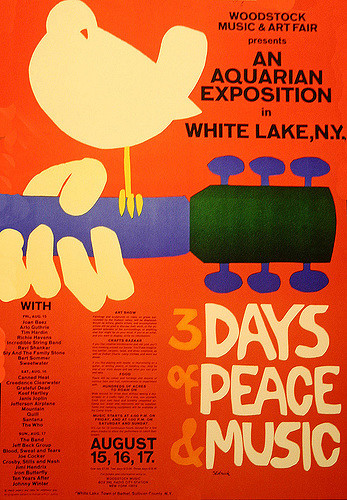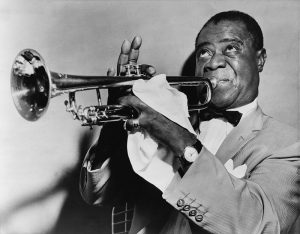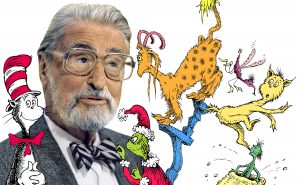The Sixties. We think of the Vietnam War, Civil Rights protests, the assassination of John F. Kennedy, the Apollo landing on the moon, hippies, Peace on Earth, and most importantly, the music. Music is how famous musicians express their thoughts and feelings to a broader audience.1 The Sixties made history through its music and more iconically, through a three-day concert known as Woodstock.

It all started with four young men that wanted to build a recording studio: John Roberts, 26-years-old, and an heir to a drugstore and a multi-million dollar trust fund; Joel Rosenman, 24-years-old, a Yale Law School graduate, and guitar player for a lounge band in Long Island and Las Vegas hotels; Artie Kornfeld, 25-years-old, a songwriter, producer, and the vice president of Capitol Records; and finally, Michael Lang, 23-years-old, and owner of a head shop that sold accessories for weed, tobacco, and other recreational drugs in Florida.2 All four men met in February of 1969 and came up with the idea of creating a rock festival, and they discussed the budget for it. They met several times after to discuss other ideas for the festival. And by their last meeting, they had a budget of five hundred thousand dollars, and were hoping for fifty thousand people to attend. Unknowingly, their “Woodstock” would become the world’s largest and most remembered Rock concert of all time.

In March of 1969, the four young men formed the Woodstock Ventures company, and each man held a twenty-five percent stake in it.3 The team now needed a location for the concert; they decided to hold the concert in a three hundred acre dairy farm in Bethel, New York, because it offered easy access from New York City, less than a mile from Route 17. And it offered electricity and water lines.4 They paid seventy five thousand dollars for the rental of the property to Max Yasgur, the owner.5 By April, Kornfeld and Lang wanted to advertise and introduce Woodstock as a place of freedom with music. They had promoters create a Woodstock image for the public. The group came up with the slogan “Three Days of Peace and Music,” because they figured, if people read “peace” in the poster, it would keep the public calm and the event free of violence. The group then hired artist Arnold Skolnick to create the image for a poster. What people thought was originally a dove on the Woodstock poster was actually a catbird, which was one of Arnold’s favorite things to draw. When Arnold finally completed the drawing for the Woodstock poster, it featured a catbird sitting on a flute along with the slogan, “Three Days of Peace and Music.” This design was approved by Woodstock Ventures. However, at the last minute, Arnold made a minor change by having the catbird stand on a guitar instead of the flute, and the poster was completed.6
Woodstock Ventures wanted the most popular rock’n’roll bands to perform at the concert. They composed contracts for each band member attending, which came with promising paychecks. They signed Jefferson Airplane for twelve thousand dollars, Creedence Clearwater Revival for eleven thousand five hundred dollars, and The Who for twelve thousand five hundred dollars.3 They had a total of thirty-two bands listed to play, including Janis Joplin, The Grateful Dead, Joe Cocker, Crosby, Stills, Nash and Young, and others. The highest paid performer was Jimi Hendrix, who signed for thirty-two thousand dollars. Hendrix would be the last act to perform and he famously closed the festival with his version of the “Star Spangled Banner,” which has gone down in history as one of the greatest performances of his career.8 Woodstock Ventures paid a total of one hundred and eighty thousand dollars for all the musicians who performed in the concert. Lang made the decision that he did not care what it would cost to get a rock band to perform for Woodstock. They would pay the deposit and create the contracts at whatever cost to ensure that they had the best performers.
By the spring time, advertisements for Woodstock started appearing in the New York Times and on radio stations across the country.9 While Woodstock Ventures had originally expected fifty thousand people to attend the festival, they sold a total of one hundred and eighty six thousand tickets, costing six dollars per day.10 In August, one week before show time, Kornfeld wanted to capture the stories of the people, their thoughts about Vietnam War, and their thoughts about Woodstock. Kornfeld made an offer with Warner Brothers to document the festival. Woodstock Ventures paid one hundred thousand dollars to have the festival filmed, and a contract was signed agreeing that if the film made it big they would get paid double the amount, and if it failed they would get nothing.
On August 14, 1969, the day before the festival, early in the morning, Woodstock Ventures noticed that traffic was backed up ten miles long on Route 17, and they were shocked to see that so many people were attending. An estimated twenty five thousand people were already waiting before the festival began.11 The four young men knew this concert was going to be amazing, but they never thought that it would go down in history as one of the biggest and “the greatest peaceful events in history,” as Time magazine called it.12

Throughout the years many attempts to recreate another Woodstock have failed. The Woodstock of 1969 will forever go down in history for its great music, the psychedelic people, and most importantly, a once in a lifetime event that can never be forgotten.
- Alan Brinkley, American History: Connecting with the Past Volume 2 (New York: McGraw-Hill Education, 2014), 812-813. ↵
- “How Woodstock Happened,” reprinted from The Times Herald-Record, 1994. http://www.edjusticeonline.com/woodstock/history/index.htm. (accessed November 17, 2016). ↵
- “How Woodstock Happened,” reprinted from The Times Herald-Record, 1994. http://www.edjusticeonline.com/woodstock/history/index.htm. (accessed November 17, 2016). ↵
- “Woodstock Music Festival.” History.com, 2009, http://www.history.com/this-day-in-history/woodstock-music-festival-concludes. (accessed November 10, 2016). ↵
- “How Woodstock Happened,” The Times Herald-Record Woodstock Commemorative Edition, 1994, http://www.edjusticeonline.com/woodstock/history/index.htm. (accessed November 17, 2016). ↵
- “How Woodstock Happened,” The Times Herald-Record Woodstock Commemorative Edition, 1994, http://www.edjusticeonline.com/woodstock/history/index.htm. (accessed November 17, 2016). ↵
- “How Woodstock Happened,” reprinted from The Times Herald-Record, 1994. http://www.edjusticeonline.com/woodstock/history/index.htm. (accessed November 17, 2016). ↵
- Spencer Bright, “Forty far-out Facts you never knew about Woodstock,” Daily Mail, August 7 2009. ↵
- “How Woodstock Happened,” The Times Herald-Record Woodstock Commemorative Edition, 1994, http://www.edjusticeonline.com/woodstock/history/index.htm. (accessed November 17, 2016). ↵
- Daily Mail, August 2009, s.v. “Forty far-out Facts you never knew about Woodstock,” by Spencer Bright. ↵
- “How Woodstock Happened,” reprinted from The Times Herald-Record, 1994. http://www.edjusticeonline.com/woodstock/history/index.htm. (accessed November 17, 2016). ↵
- Daily Mail, August 2009, s.v. “Forty far-out Facts you never knew about Woodstock,” by Spencer Bright. ↵




75 comments
Mariah Cavanaugh
I always assumed that Woodstock was put together by a few hippies who wanted a free-loving music show and to rebel against the system which was represented by the upper class. I found it very interesting that it was organized by four young men who seemed to be part of the upper class. An heir to a drugstore and a multi-million dollar trust fund? It doesn’t get much higher class than that. Your article was fun and informative, thanks!
Jennifer Salas
I never put much thought about the people who created and funded Woodstock. When I read articles like this it motivates me to follow my dreams. Woodstock started with an idea and it turned into a reality, nobody though it was going to be so big. Today when people think of Woodstock they associate it with peace and love, and thats exactly how it was meant to be percieved. So many people attended Woodstock, and many artist performed making Woodstock an iconic event. Although many people have tried to recreate it, Woodstock will always be remebered for bringing people together with music.
Maisie Favila
It’s no secret that the sixties were truly swinging. There was a bunch of work put into making Woodstock possible which is now easily known as one of the greatest music festivals of all time. It was also a platform for now well known artists such as Jimi Hendrix. As someone who loves attending concerts, this article just reminded me of why I do.
Richard Morales
It’s very interesting to hear about the investments and the people who formed Woodstock. Its funny that they only aimed for 50,000 attendees when half that amount of people were waiting before the event even started. What doesn’t surprise me is that Jimi Hendrix was the highest paid perfomer, he is the greatest guitarist of all time!
Daniela Martinez
Great article, Woodstock was a one of a kind experience that is hard to replicate today. The backstory was great and it highlights the excitement and effort that was put into making one of the greatest concerts in American history. Not only did Woodstock have what I personally believe to be one of the greatest musical lineups, Woodstock served as an escaped from the many conflicts and issues of the time.
Kimberly Simmons
I have learned about Woodstock in music classes and have seen many photos from the event, but this article dives deeper into the details of this legendary concert. I didn’t know of the four men involved in its creation, or their backstories, so that was interesting to read — especially because they were so different. It’s amazing how an idea can quickly turn into a legacy.
Regina De La Parra
Great article! I love going to concerts and reading about one was amazing! I found it really interesting how much tough was put into this event and even the posters of the event. I think it is really cool and definitely will listen to this music with more knowledge about its origins and its meaning. Great job Aurora!
Thomas Fraire
I’ve never been a huge fan of the mucsic tht came from Woodstock and this generation, but growing up I have been to so many Woodstock themed things. Awesome article. You completed an extraordinary activity inquiring about the four Woodstock makers. The data was elegantly composed and displayed in a reasonable way. It’s mind boggling that such a basic idea of music and peace could end up being so chronicled. I had constantly known about Woodstock however did not completely comprehend the greatness nor the effect that it had on the History. Much obliged to you for picking this point. Great work!
Samuel Stallcup
The original Woodstock is always and will always be one of the most iconic music festivals in world history, for it accomplished what so many people were unsure about. It’s large success was the building ground for huge artists such as Jimi Hendrix, Grateful Dead, and other artists. It is also worth noting that Woodstock is a symbol of what the “Hippie Movement” was defined as. Great article.
Anna Guaderrama
I love all kinds of music and have always lowkey fantasized over what it would be like to go to Woodstock. I feel like from seeing movies and tv shows that talk about it, they just always made it seem fun and exciting, in short an ‘experience’. However, it was interesting learning about it rather than just hearing about it. I never would’ve guessed that it had originally started out with four men.